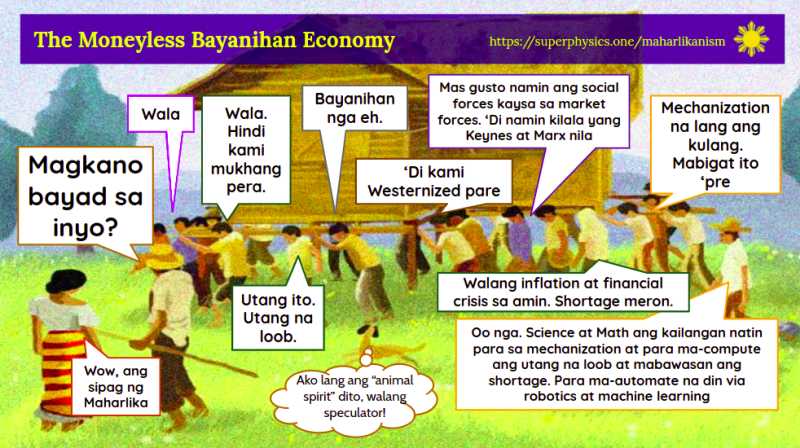Barter in Maharlika
Table of Contents
Maharlika was no stranger to natural disasters such as typhoons and earthquakes. This was proven in the practices and myths of the country:
The first man came out of the one bamboo and the first woman from the other. These, they say, married with the approval of Linog, which is the earthquake.

Some old men were renowned for the accuracy of their weather forecasts. They predicted storms, their severity, and the flooding that would follow, three or four days in advance, or even a week, by judging from cloud formations and the color of the skies, sun, and moon.

Moreover, the natural disasters were worsened by man-made disasters like piracy and slave-trading:
The Spaniards considered any such venturing datus as simple pirates. They defined ‘mangayaw’ itself as piracy—armed robbery at sea.

This is different from European countries which were safe, fertile, had fewer disasters, and milder slavery policies.
An Economy Built for Crisis
Many large civilizations had difficult environments similar to Maharlika:
- Mongolia
- Arabia
- Inca
Like Maharlika, such countries did not have gold mines and so transacted with barter.
Raja Calanao [of Zamboanga del Norte] showed me certain large valleys, making me a sign that the gold there was as abundant as the hairs of their heads. But they have no iron with which to dig it, and they do not dare to go to the trouble [to get it].

The Maharlikan traders assemble in crowds and carry the goods away with them in baskets. Even the foreign merchants do not know the Maharlikan traders and cannot distinguish them, there will be no loss. The native traders will bring those goods to other islands for barter. It will take 8-9 months for them to return. They then repay the foreign merchants with what they had obtained for the goods.

Maharlika used Trust, Inca used Strings
Maharlikans used a trust system which was limited and not scalable. This limited the growth of the external trade to only the Luzon and Visayas, preventing from Maharlika from spreading or having a large economy, unlike Java or Cambodia.
However, this made the Maharlikan economy resilient. Cambodia and Java, on the other hand, had frequent wars between Thailand and Malaysia respectively.
The barter system of the Inca and Egyptian empires was more scalable. It used granaries as the store of grain-value and ledgers as the tool of trade.
- The Inca used quipu as the ledger
- The Egyptians used papyrus
We scale the barter system of Maharlika by using points on a web server as the tool of trade. This creates a points-based system as an implementation of the bayanihan economy.
